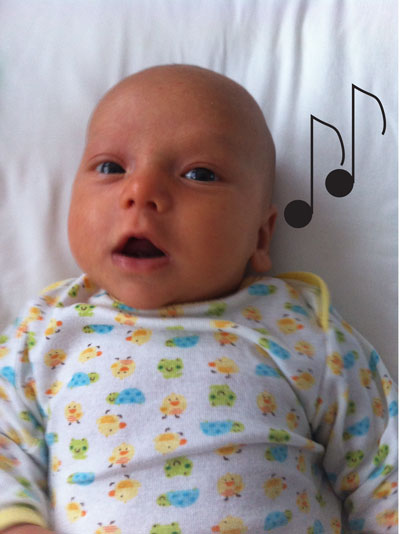Learning the brain circuits that support specialization of the human brain for natural sounds is fundamental to our understanding of who we are. Recent data suggest that the sensitivity to environmental sounds may underlie our unique ability to comprehend speech. Indeed, speech stimuli constitute a small fraction of the full range of natural sounds that our auditory system has to process on a daily basis. The present study is the first to explore how the newborn brain processes natural, but non-speech-like environmental sounds.

Sensory systems are thought to have evolved to efficiently represent the full range of sensory stimuli encountered in the natural world. Like the statistics of visual scenes, the statistics of natural environmental sounds are characterized by a specific statistical property, termed scale-invariance: the property of exhibiting similar structures or patterns at different levels of observation. Recently, we demonstrated that adults perceived randomly generated sounds as natural when they were under the constraint of scale-invariance, and as unnatural when this constraint was removed; and that infants could form a category of randomly generated sounds that obey scale-invariant, but not variable-scale statistics. However, the developmental origins of how the auditory system encodes scale-invariance remain unknown. In this work, we used functional near-infrared spectroscopy (fNIRS) to test whether the newborn brain differentially encodes scale-invariant and variable-scale sounds.
We found that scale-invariant and variable-scale sounds are differentially encoded in the newborn brain. This is an important discovery, because it demonstrates the specialization of the new born brain for the statistics of natural sounds. More generally, our results suggest that the basic mathematical principle of efficient coding of information guides the auditory neural code from the beginning of human development. Furthermore, it innovatively expands the spectrum of theoretical questions that can be addressed using near-infrared spectroscopy, and as such, opens up a new avenue for testing how a wide range of sounds and other natural stimuli in other modalities are processed throughout human development.
Reference
The neural correlates of processing scale-invariant environmental sounds at birth. NeuroImage, Gervain, J., Werker, J.F., Black, A., Geffen, M.N. (2016) 133:144-150.


































